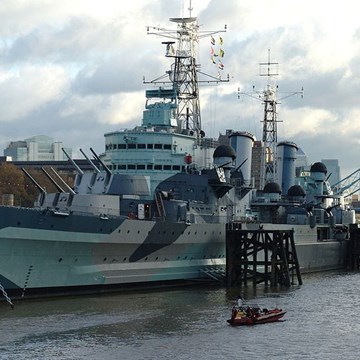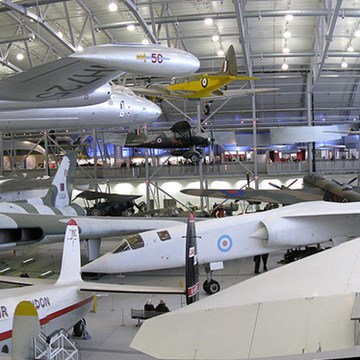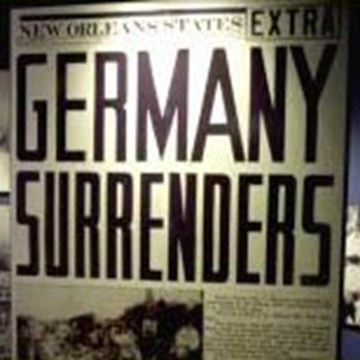Cafesjian Center for the Arts
Գաֆէսճեան արվեստի կենտրոն
Vision and Mission
The Cafesjian Center for the Arts is dedicated to bringing the best of contemporary art to Armenia and presenting the best of Armenian culture to the world. Inspired by the vision of its founder, Mr. Gerard L. Cafesjian, the Center offers a wide variety of exhibitions, the majority of which are derived from the Gerard L. Cafesjian Collection of contemporary art. A diverse program of lectures, films, concerts, and numerous educational programs for adults and children augment the Center’s vigorous exhibition schedule.
Gerard L. Cafesjian
Gerard Leon Cafesjian (1925-2013) was a businessman and philanthropist who founded the Cafesjian Family Foundation (CFF), the Cafesjian Museum Foundation (CMF) and the Cafesjian Center for the Arts.
G. Cafesjian was born on April 26, 1925 in the Bensonhurst neighborhood of Brooklyn, New York. His parents had come to the United States preceding the Armenian Genocide by the Turks in 1915.
After amphibious training, he served in the United States Navy in WWII aboard JP Morgan’s yacht, the Corsair III, built in 1895 and renamed the USS Oceanographer. The ship did extensive survey work in and around Guadalcanal and other Solomon Islands. He also served aboard the USS Andres (DE45), a destroyer escort for convoys from the United States to North Africa. When he returned after the war he married Cleo Thomas, a nurse he met during the war. He earned a degree in economics from Hunter College, and a doctorate of jurisprudence from St. Johns University Law School, both in five and a half years. He was a member of the New York Bar Association.
He began his career with West Publishing as a legal editor in New York City. He was the first employee in the history of the 100-year-old company to be transferred from any subsidiary company into the home office in St. Paul, Minnesota. At West Publishing he rose through the ranks to the position of executive vice president; overseeing sales, marketing, customer service, public relations, all Westlaw office training and development. At West, he also conceived of and started the West Legal Directory and a well-known program, “Art and the Law”, which earned he and West numerous awards.
G. Cafesjian retired from West Publishing when it was sold to Thompson Publishing in 1996. He felt his destiny was to help the country of Armenia, which had gained its independence after hundreds of years of subjugation under various rulers. The time and circumstances and confluence of resources would help him make a difference for the country.
After attending to his family needs, G. Cafesjian established the Cafesjian Family Foundation. Through that Foundation he devoted millions of dollars to Armenia on relief projects including renewable energy, headed a TV station, ran a newspaper, contributed to the clearing of land mines by specially trained dogs, founded a bank, insurance company, and supplied the resources for many other projects. If any of the projects were to prove successful, the profits were to remain in Armenia for further development.
He received accolades and recognition from both the United States and Armenia institutions, including the Ellis Island Award in 2000.
G. Cafesjian completely renovated the Cascade site in downtown Yerevan, Armenia. The Cascade was a huge old crumbling Soviet structure of epic proportions. He opened the Cafesjian Center for the Arts at the Cascade in 2009. Over one million people have visited the Center annually since its opening. His goal was to bring some joy into the lives of the Armenians through exposure to art. The Museum enjoys a world-class sculpture garden with works by Botero, Flanagan, Chadwick, Plensa and Lalanne, to name a few. Admission to the sculpture garden is free and it is now the most prominent meeting place in Armenia.
The Cascade Complex
The building that now houses the Cafesjian Center for the Arts is well known to the Armenian people, especially those living in its capital city of Yerevan. Known as “The Cascade,” the complex was originally conceived by the architect Alexander Tamanyan (1878–1936). Tamanyan desired to connect the northern and central parts of the city—the historic residential and cultural centers of the city—with a vast green area of waterfalls and gardens, cascading down one of the city’s highest promontories. Unfortunately, the plan remained largely forgotten until the late 1970s, when it was revived by Yerevan’s Chief Architect, Jim Torosyan. Torosyan’s conception of the Cascade included Tamanyan’s original plan but incorporated new ideas that included a monumental exterior stairway, a long indoor shaft containing a series of escalators, and an intricate network of halls, courtyards, and outdoor gardens embellished with numerous works of sculpture bearing references to Armenia’s rich history and cultural heritage.
Construction of Torosyan’s design of the Cascade was launched by the Soviets in the 1980s but abandoned after the Armenian earthquake of 1988 and the break-up of the Soviet Union in 1991. With independent rule and the transition to democracy, Armenia entered a period of severe economic hardship, and the Cascade remained a neglected relic of the Soviet era for more than a decade. Mr. Cafesjian, working with the City of Yerevan and the government of the Republic of Armenia, initiated its recent revitalization in 2002. Over the next seven years, virtually every aspect of the monument was renovated, and much of it completely reconstituted into a Center for the Arts bearing the name of its principal benefactor.
Cascade Statistics
Number of steps - 572
Distance from the bottom to the top of the Cascade: 302 m / 991 feet
Distance from the bottom to the top of the Monument Terrace: 450 m / 1476 feet
Width: 50 m / 164 feet
Height of unfinished section: 78 m / 256 feet
Height of Monument Terrace: 118 m / 387 feet
Incline: 15 degrees
Exhibitions and events

Mural by Grigor Khanjyan
Permanent exhibitionLocated in Khanjyan Gallery is the monumental mural executed by the well-known Armenian painter Grigor Khanjyan (1926–2000). Commissioned for the original Soviet monument but left unfinished at...

In the Mind of the Collector
Permanent exhibitionThroughout his life, Gerard L. Cafesjian has indulged a passion for collecting that encompasses areas lying outside the arena of contemporary art. His varied interests are on continuous display in...
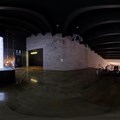
Swarovski Crystal Palace
Permanent exhibitionCafesjian Center for the Arts features a selection of Swarovski Crystal Palace chandeliers, designed by Vincent Van Duysen, Tord Boontje, Georg Baldele, Michael Anastassiades and Diller Scofido +...
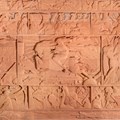
Sasuntsi Davit Relief
Permanent exhibitionIn the 1980s, when the Cascade was being constructed, architect Jim Torosyan (1926-2014) invited sculptor Artashes Hovsepyan to design one of the galleries in the future complex. The artist with the...
Educational programs
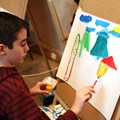
The Landscape of My Country
WorkshopAhead of International Musuem Day and Museum Night Events, the theme of which for this year is Museums and Cultural Landscapes, the Cafesjian Center for the Arts (CCA) launched a new educational...
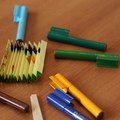
Spring Carnival
WorkshopThe educational program Spring Carnival is based on the exhibition Robert Elibekian: Reflections . The program is designed for school children of two different age groups: 7-13 and 14 +. In the...
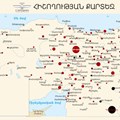
Mapping the Memory
WorkshopMapping the Memory (based on the exhibition Silence of My Grandmother’s Eyes) on May 16. The guest of the program doctor Harutyun Minasyan will share the path of his family through a...
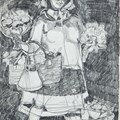
Armenian Collages
WorkshopArmenian Collages (based on the exhibition, Sarkis Hamalbashian: Armenian District ) The participants will create their own narratives using the characters from Hamalbashyan’s works.
Collections
We don't have anything to show you here.








